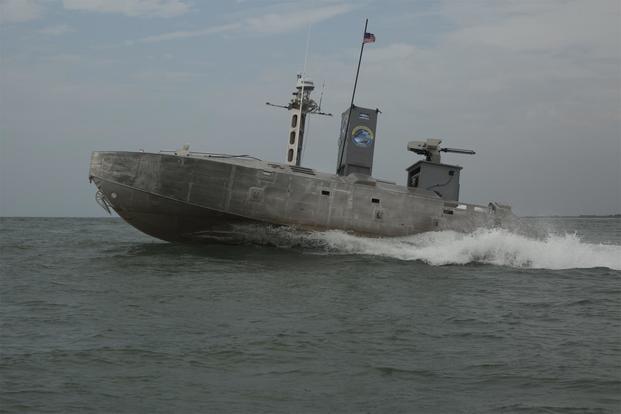QUANTICO, Virginia -- As the Marine Corps braces for possible clashes in the Pacific, its top leaders are looking to self-driving ships that will keep the enemy guessing.
Marines recently put the Expeditionary Warfare Unmanned Surface Vessel to the test during an East Coast training exercise. After seeing what the 40-foot-long autonomous ship was capable of, Lt. Gen. Eric Smith, head of Marine Corps Combat Development Command, said he's thinking about how they could be used in the fight.
"Something that can carry 50 tons, 100 tons, 1,200 tons that's totally autonomous -- I'm very interested in that to be able to do resupply," Smith told industry leaders at the annual Modern Day Marine Expo in Quantico, Virginia.
Navy officials have big plans for an unmanned surface fleet, and they've said the Expeditionary Warfare USV that Marines tested this summer could revolutionize naval warfare.
Related: Navy's Plans for Unmanned 'Ghost Fleet' Remain Shrouded in Secrecy
"There are certain things you can do with these systems that you will never be able to do with manned vehicles," Bob Gripshover, one of the engineers who helped develop the drone ship, said in a news release. "These types of systems [open] up new ways of fighting, as well as new missions."
The vessel can conduct long-range missions in contested environments. And it can sense other traffic in the sea and respond to threats.
It's also equipped with a Longbow Hellfire Missile Launcher and a .50-caliber machine gun on a remote weapon station.
The Marine Corps needs all of that and more in autonomous surface or underwater vessels, Smith stressed.
"It has to be sniffing and recording," he said. "It can't just be a drone. ... It needs to be sniffing and telling us something."
And, he added, "it has to be able to look like something it's not."
"I'll just leave it at that," Smith said.
Navy and Marine leaders have been tight-lipped about how the services plan to put unmanned surface vessels to use in the future. The Navy has plans for a 10-ship "ghost fleet" and wants $2.7 billion to build the mysterious vessels over the next five years.
In February, the Navy sent a 132-foot-long self-driving ship from California to Hawaii and back again without any sailors on board for much of its voyage.
-- Gina Harkins can be reached at gina.harkins@military.com. Follow her on Twitter @ginaaharkins.














